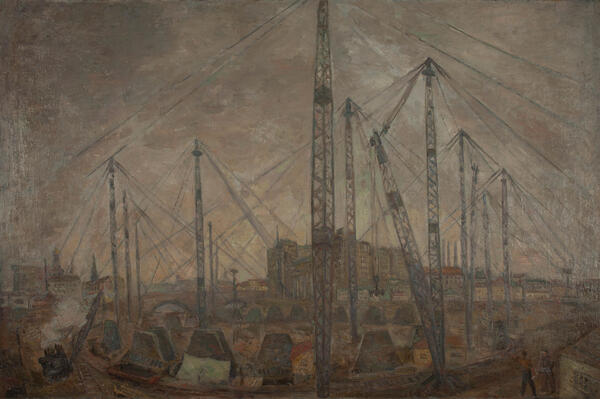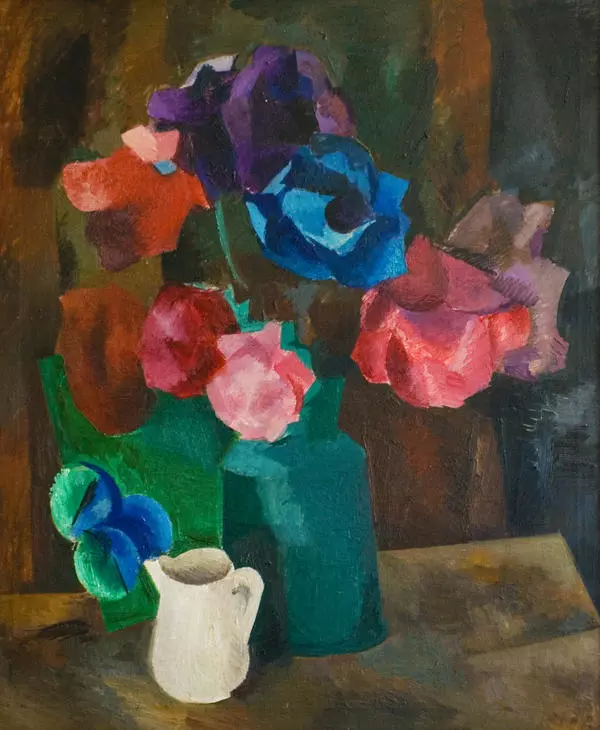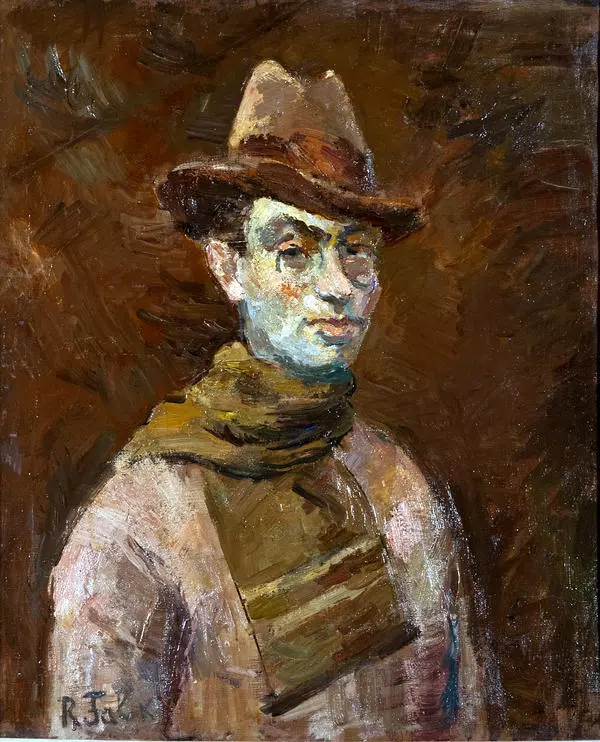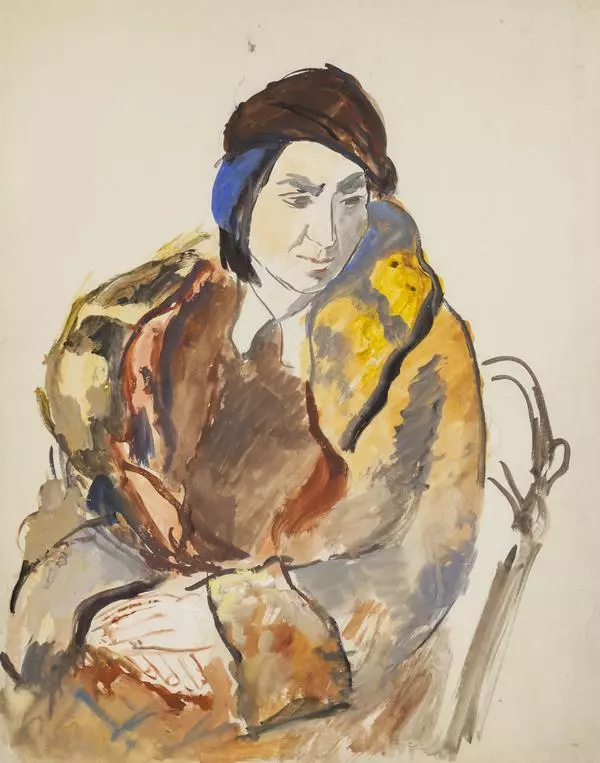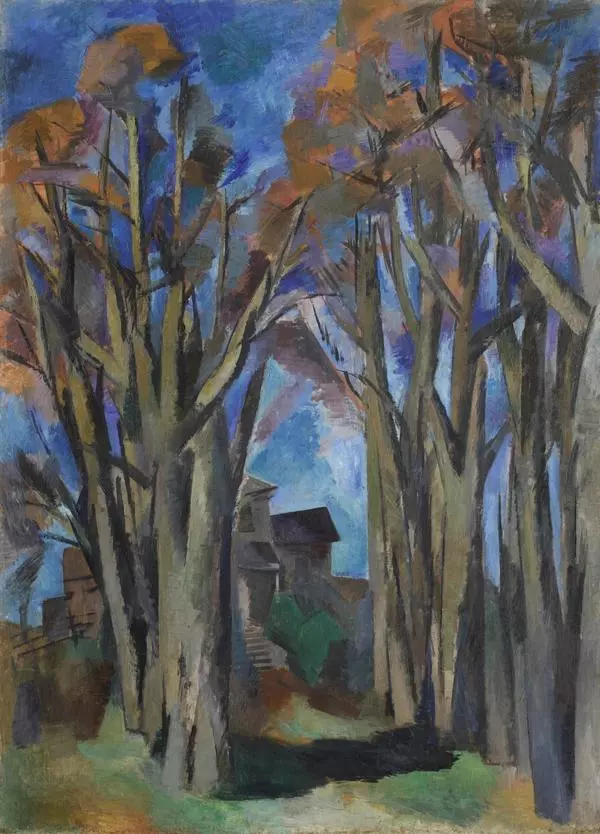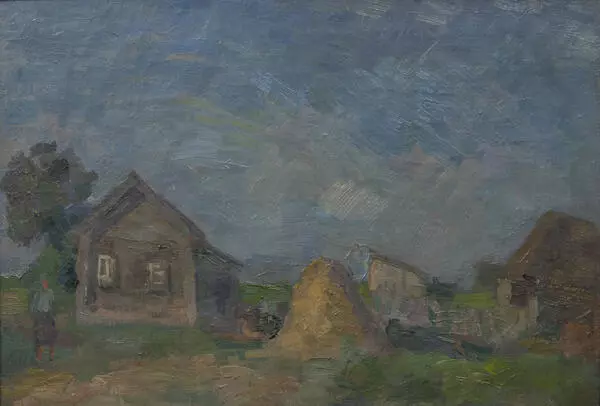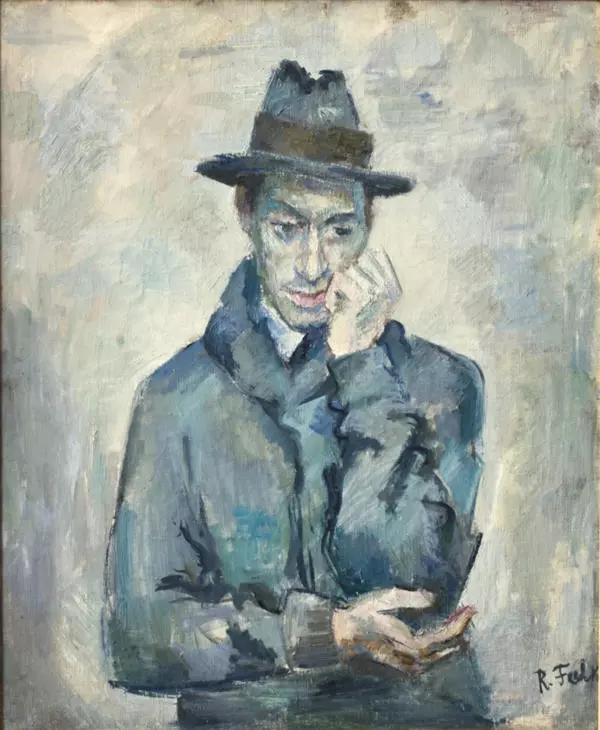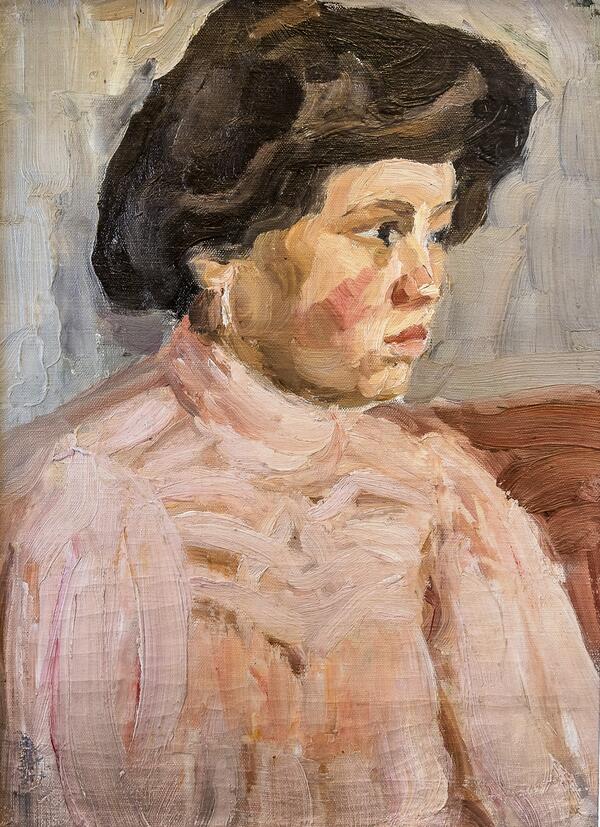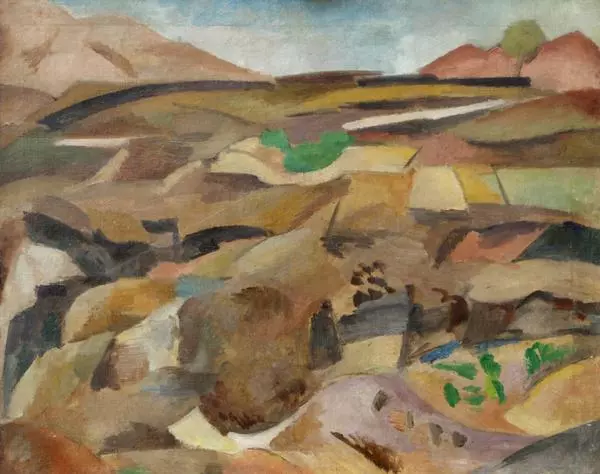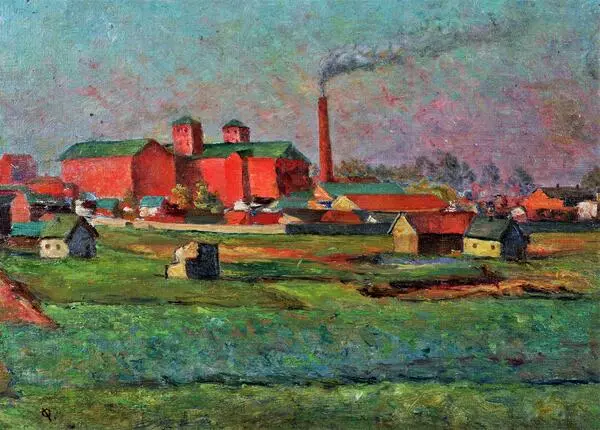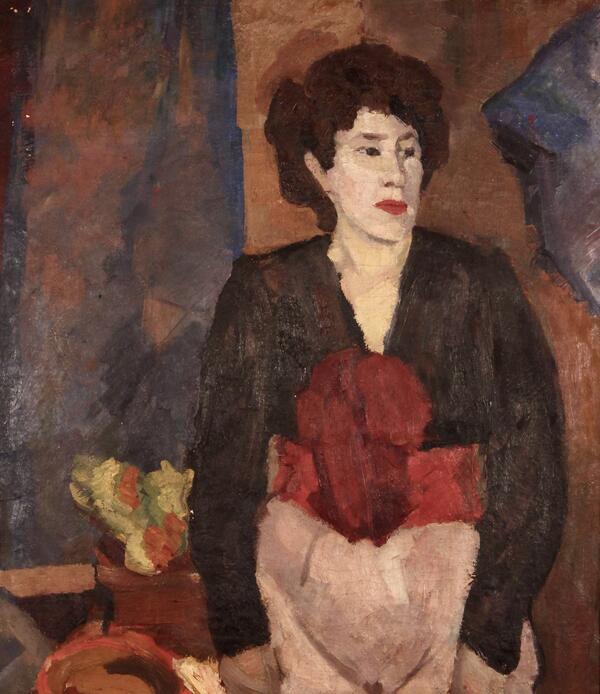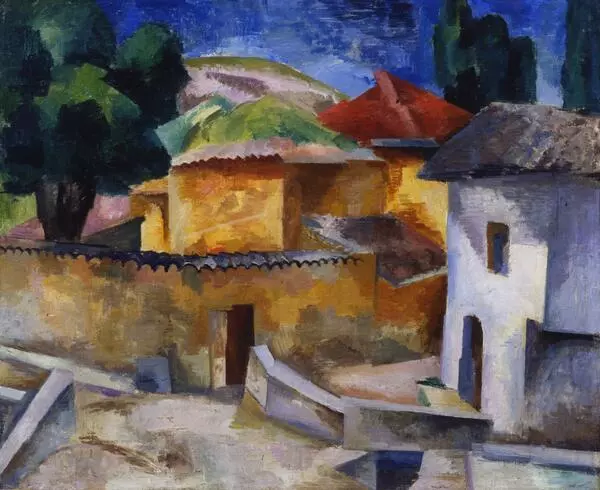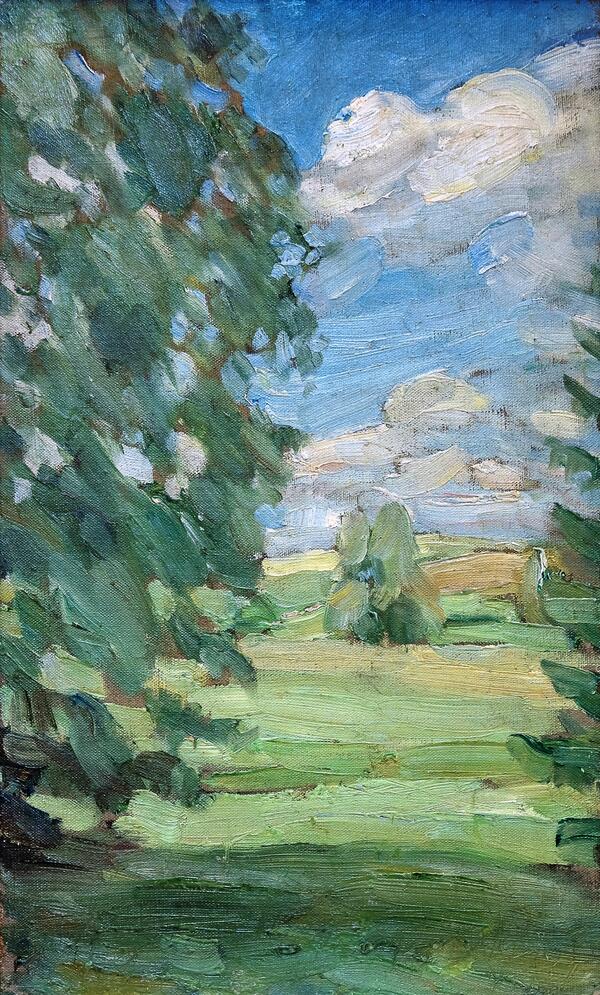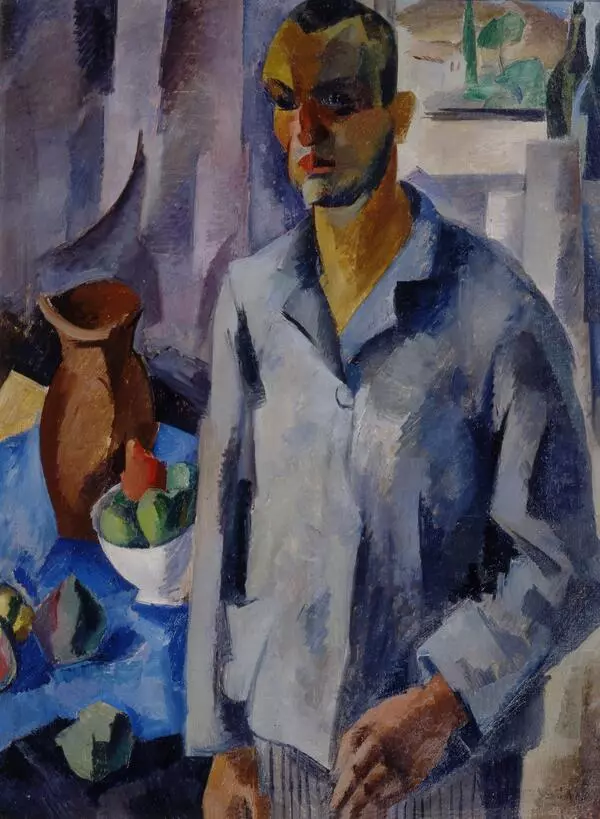The painting by Robert Falk presented in the exhibition belongs to the Paris period of his work. He depicted a famous model. According to Falk’s widow, he was the first artist for whom Amra posed. Later, she became a professional model. In particular, she was painted by Picasso and Matisse.
In all likelihood, the portrait of Amra was displayed at an exhibition in Paris, as the artist signed his works only when submitting them to exhibitions or when selling.
In her free pose, in the slight tilt of her head and in the smooth outlines of her figure, the beholder can feel the natural grace of a young, strong and feminine body. She is not very pretty, if judged by classic criteria: her face is devoid of correct features, her hands are rough, and her forms are somewhat heavy. But all that makes for a very special appearance of a person, who is beautiful due to the fact that everything in them is proportionate, everything is in harmony. In each form we see how fully she embodies vital forces.
The artist is not interested in either indicating the social status of the model or studying her character. The contemplative and dreamy expression of her face is perceived more as a fleeting state, rather than a manifestation of her character as a whole.
The color scheme of the portrait is extremely rich and elaborate. The bluish-lilac background, the ocher-brown body, the red dress, the green leaf in Amra’s hand — all this is quite intense color-wise. Softened by complex tonal transitions, these color planes create an evenly shining picturesque layer. The artist renders the background, the fabric of the dress, and jewelry quite simply. The background is painted with transparent light brush strokes, the dress — with denser, but still separate strokes, the body — with smooth, even, sometimes thick strokes.
The composition is based on the principle widely
used in medieval European and ancient Russian art. The bowed head and the bent
body form a concave arch. But if in incorporeal iconographic images the arched
shape of the figures embodies the fullness of spiritual energy, in Falk’s
painting, due to the predominance of the material principle in the portrait, it
is perceived as the fullness of the vital energy of the body, the spiritualization
of the form itself.



